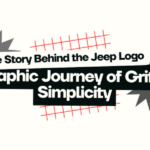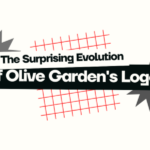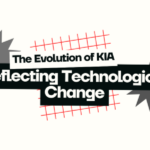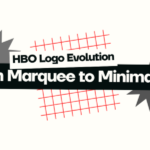Artificial Intelligence (AI) has revolutionized numerous industries, and logo design is no exception. With the rise of AI-powered design tools, businesses can now create professional-looking logos within minutes.
However, despite the efficiency and affordability of automation, the human touch remains an indispensable element in designing logos that evoke emotion, brand identity, and uniqueness.
In this comprehensive blog post, we will explore how AI-powered logo design is shaping the industry in 2025, its benefits and limitations, and how businesses can strike a perfect balance between automation and human creativity.
The Evolution of Logo Design
Traditional Logo Design
Before the advent of AI, logo design was a manual process carried out by skilled graphic designers. This approach involved extensive research, brainstorming, sketching, and refinement. Each logo was tailored to reflect a brand’s values, mission, and target audience, making human creativity the driving force behind every design.
The Introduction of AI in Logo Design
The integration of AI in logo design started with simple automation tools that provided basic templates. Over the years, these tools evolved to offer more sophisticated features, including:
- AI-powered logo generators like Looka, Wix Logo Maker, and DesignEvo.
- Machine learning algorithms that analyze industry trends and suggest suitable design elements.
- Automated customization, where users can tweak colors, fonts, and shapes without needing design expertise.
The State of AI-Powered Logo Design in 2025
Today, AI-driven logo design tools are more advanced than ever. They use deep learning models to predict user preferences, generate multiple design variations instantly, and even suggest branding guidelines. While this has streamlined the process for startups and small businesses, large enterprises and creative agencies still rely on human designers to ensure a unique and impactful brand identity.
We’ve covered how to design localized logos in a previous post—be sure to explore it for deeper insights.
Top AI-Powered Logo Design Tools
Designing logos that represent businesses requires amazing graphic design insight and years of expertise. However, AI logo design tools have become a game changer, helping companies create unique logos in no time. According to our research, the following are the best AI-powered logo design tools on the market.
1. Looka
Looka is a popular AI-powered logo design tool founded in 2016 by Dawson Whitfield, a logo design expert. The tool helps design logos per clients’ preferences, meaning you can customize a logo for your business based on industry, design, color, and other important elements. Using Looka for your business logo generates multiple options to help you choose the best. Looka stands out from the competition by creating a complete brand kit that includes logos, business cards, social media assets, and more.
Best For:
Entrepreneurs and small businesses looking for a professional branding solution.
Pricing:
- Free to try (watermarked logos).
- Paid plans start at $20 for a basic logo package.
Why Choose Looka: It’s a comprehensive tool for creating logos and an entire brand identity.
2. Canva Logo Maker
Another great AI logo maker is Canva. It offers a drag-and-drop interface, making logo design convenient and making AI-powered suggestions fun. When you choose Canva to design your logo, you can leverage a library of templates, icons, fonts, and more. Nonetheless, Canva is a brilliant tool for beginners as it offers convenience, which makes the entire logo design process hassle-free.
Best For:
Non-designers and beginners who want a simple, intuitive tool.
Pricing:
- Free with limited features.
- The pro version starts at $12.99/month.
Why Choose Canva: It’s user-friendly and integrates seamlessly with Canva’s other design tools.
3. Wix Logo Maker
Wix’s AI-powered logo maker generates logos based on your brand name and industry. It provides customizable designs and high-resolution downloads. The platform also integrates with Wix’s website builder, allowing you to create a logo and website in one place.
Best For:
Small businesses and startups that want a quick and professional logo.
Pricing:
- Free to design.
- Paid plans start at $24.99 for a logo package.
Why Choose Wix: It’s great for those who want a logo and a website from the same platform.
4. Shopify Logo Maker
Shopify Logo Maker is an AI-powered logo maker tailored for e-commerce and online stores. It offers pre-designed templates for various industries and provides free high-resolution downloads. The platform is designed to simplify branding for online entrepreneurs.
Best For:
Online businesses and entrepreneurs using Shopify.
Pricing: Free to use.
Why Choose Hatchful: It’s completely free and optimized for e-commerce branding.
5. BrandCrowd Logo Maker
BrandCrowd’s AI logo maker features a vast library of templates and customization options. It allows you to tweak fonts, colors, and icons to create a unique logo. The platform also offers additional branding assets, such as business cards and social media kits.
Best For:
Businesses looking for quick, professional logos.
Pricing:
- Free to try.
- Paid logos start at $20.
Why Choose BrandCrowd: It offers a wide variety of templates and customization options.
If you’re interested in learning about the nike logo evolution, check out our in-depth post.
Benefits of AI in Logo Design
1. Speed and Efficiency
AI-powered logo generators can produce multiple design options in seconds, reducing the time required to conceptualize and finalize a logo.
2. Cost-Effectiveness
Hiring a professional designer can be expensive, especially for startups. AI tools provide budget-friendly alternatives without compromising on quality.
3. Data-Driven Design
AI analyzes market trends, color psychology, and typography choices to suggest logos that are more likely to resonate with target audiences.
4. Accessibility for Non-Designers
Even without prior design experience, users can create professional logos using AI-powered platforms with intuitive interfaces and step-by-step guidance.
5. Scalability
Businesses can generate multiple logo variations for different platforms, including social media, websites, and merchandise, ensuring brand consistency across all channels.
Want to dive deeper? Read our detailed guide to why you need a vector based logo design.
Limitations of AI-Powered Logo Design
1. Lack of Deep Creativity
AI relies on algorithms and pre-existing data to generate logos, which can lead to generic designs that lack originality and artistic intuition.
2. Limited Customization
Although AI tools allow users to tweak certain aspects of a design, they still fall short in providing full creative freedom compared to human designers.
3. Over-reliance on Templates
Many AI-generated logos are based on predefined templates, leading to the risk of multiple brands having similar designs.
4. Absence of Emotional Connection
A brand’s logo should evoke emotions and tell a story. AI lacks the ability to understand cultural nuances, personal experiences, and brand storytelling like a human designer can.
5. Ethical Concerns and Copyright Issues
Since AI tools are trained on vast datasets, there is a risk of plagiarism or accidental similarity to existing logos, raising potential legal concerns.
Future Trends in AI-Powered Logo Design
1. AI-Generated 3D and Animated Logos
With advancements in AI, logo generators in 2025 can create three-dimensional and animated logos, enhancing brand engagement in the digital space.
2. AI-Powered Augmented Reality (AR) Branding
Brands will integrate AI-generated logos into AR experiences, making interactions more immersive for consumers.
3. AI-Driven Hyper-Personalization
Future AI tools will analyze individual user preferences in real time to create unique logos tailored specifically for each business.
4. Blockchain-Powered AI Logo Copyright Protection
With concerns over originality, blockchain technology will be integrated to certify AI-generated logos, ensuring authenticity and protecting against design theft.
5. AI-Assisted Collaboration Between Designers and Clients
AI tools will facilitate seamless collaboration by allowing real-time feedback and modifications during the logo design.
Don’t miss our detailed article on the top common branding mistakes new businesses make.
The Role of Human Designers in 2025
Despite the advancements in AI, human designers continue to play a crucial role in logo design by:
- Providing artistic expertise and intuition that AI lacks.
- Ensuring brand authenticity and uniqueness.
- Offering emotional storytelling and deeper brand connections.
- Conducting market research and understanding customer psychology beyond data-driven insights.
- Combining multiple elements cohesively for a polished and professional look.
We strongly recommend reading our in-depth article “Are Online Logo Makers Worth It?” before making a decision.
Achieving the Perfect Balance – AI & Human Collaboration in Logo Design
The rise of AI in design has transformed the way businesses and designers approach branding. While AI offers speed, efficiency, and data-driven insights, it lacks the emotional intelligence and creative intuition of human designers. To truly leverage the best of both worlds, businesses must establish a seamless synergy between AI automation and human creativity. Here are key strategies for achieving this balance:
1. AI for Ideation, Humans for Refinement
AI-powered tools can generate logo concepts based on predefined inputs, analyzing brand attributes, industry trends, and customer preferences. These initial designs provide a strong foundation, allowing human designers to focus on refining and enhancing uniqueness. While AI may produce multiple variations quickly, human creativity is essential for adding emotional depth, brand storytelling, and originality. A logo isn’t just a visual—it’s an identity and that requires a human touch to ensure it resonates with the target audience.
2. AI for Speed and Efficiency, Humans for Storytelling
AI excels at streamlining processes, automating repetitive tasks, and expediting workflows. For example, AI can instantly generate different versions of a logo with varying color palettes, typography, and layouts. However, speed alone isn’t enough—effective logo design goes beyond aesthetics. Human designers infuse meaning into the visual elements, crafting a compelling story that aligns with a brand’s mission, values, and audience expectations. AI can generate designs, but humans breathe life into them.
3. AI’s Data Analysis Meets Human Innovation
AI-driven design tools analyze vast amounts of data, identifying trends in colors, fonts, and styles that appeal to different demographics. AI can also assess competitor branding, providing insights into what works in a specific industry. However, data alone doesn’t create a successful logo—interpretation and creative application do. Human designers take AI’s data-driven suggestions and apply their expertise to craft logos that are not only trendy but also timeless, unique, and aligned with the brand’s identity.
4. Custom AI Training for Personalized Logo Design
Many businesses rely on generic AI-generated logos that lack distinctiveness. To overcome this, companies can develop proprietary AI models trained on their unique brand history, design philosophy, and aesthetic preferences. By feeding AI with brand-specific design rules, past logo iterations, and style preferences, businesses can ensure AI-generated logos maintain consistency with their established branding. This allows AI to become an extension of the brand rather than just a generic design tool.
5. Ethical Considerations & Legal Oversight
While AI can generate thousands of logo variations in seconds, not all of them are legally sound. AI models are trained on vast datasets, and there is always a risk of unintentionally creating logos that resemble existing trademarks. Human oversight is crucial to ensure originality, prevent copyright infringement, and maintain ethical design practices. Designers must carefully evaluate AI-generated logos, verify their uniqueness, and refine elements to avoid potential legal disputes.
In case you haven’t seen it yet, our article on “Michelin Man Logo Evolution: History And Meaning” is an interesting read!
Avoid Risking Your Brand Image With Logovent’s Logo Design Services
A logo design is the first impression of your business, and risking it with an uncustomized and typical design is not a wise decision. While AI has made it easy to design logos, the lack of uniqueness makes your logos less attractive to the customers, ending up failing to build brand recognition. With that being said, if you are looking for an agency to design a logo that is personalized to your needs, LogoVent is at your rescue. We have been serving businesses in the United States for 10+ years with logo and branding design, making them establish their prominence in the competitive market. Reach out to us today to discuss the idea and get the logo creation process started.
Conclusion
AI-powered logo design has come a long way, offering efficiency, affordability, and accessibility. However, while AI can generate impressive visuals, it still cannot replace human designers’ artistic intuition, emotional storytelling, and strategic thinking. The future of logo design in 2025 lies in a harmonious blend of automation and human creativity. AI handles efficiency and data-driven insights, while human designers infuse uniqueness, authenticity, and meaning into brand identities. By striking the right balance, businesses can achieve visually stunning logos representing their brand essence in an ever-evolving digital landscape.










